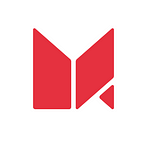UX Designers & Their Toys: Tools & Tips From MING Designers
Behind-the-scenes facts about our designers, the tools they use, and some tips from their lessons learnt.
by Fang Dong, Senior Community Manager, and Randall Wong, Marketing Intern, at MING Labs
Ever wondered who the faces behind our designs are and what tools they use? In this article, we let you take a look behind the scenes and explore the world of our design team from MING Labs Shanghai.
Meeting The Team
Before we talk about the tools that they use, let us introduce the design team and get you a little more familiar with them.
Don’t be fooled by her demure appearance, Chloe loves to play video games, especially RPG, in her free time.
With a look of kindness, this gentle lady has a heart of gold. Ying Chun loves to volunteer at animal shelters in her free time and donates to their cause.
Introducing himself as someone who smiles a lot, Miguel is an extremely friendly human being. If he doesn’t smile, it means someone managed to annoy him (which is very rare). Guess the photographer of this portrait did a good job at annoying him.
German engineering speaks of precision, Christoph is no exception. He built his bike from scratch, assembling the bike according to his design.
When it comes to travel, A-Shin knows the cheapest way to do so. This nomad actually traveled around China for half a year, carrying only 1000 RMB with him.
A keen self-learner who seeks to improve himself daily, Zanwei watches design tool tutorials and re-design apps or interfaces to find ways to improve things.
A man of adventure, Nathan loves scuba diving. He does 100 dives a year and is aiming to get a masters in diving.
Some Of Our Designers’ Favorite Projects Of 2018
Tools They Loved
Sketch, Principle and InVision were some of their favorite tools over the past year. But besides those, we have listed some other cool tools that they have been using.
Framer — Prototyping Tool
To those who find Framer difficult to use due to its innate coding nature, we’ve heard you! Nevertheless, we still believe Framer is a handy prototyping tool especially for companies like MING where our designers work closely with our developers. This tool allows designers to code out wireframe designs and interactions, hence allowing developers to better understand the intentions of designers.
Overflow — User Flow Tool
Overflow links wireframes together and can be used to show clients a broad overview of how the app/website will look like. Its interactive feature makes it the perfect tool for client meetings and we bet your clients will enjoy it the next time you use it.
MindNode — Mind Mapping Software
Are you a big picture person? Whether you said yes or no, MindNode is the tool for you. A mind map tool in nature, MindNode helps you to organize your thoughts and ideas. With a better overview of a website, it will be easier for your designs to flow from one to the other. Use MindNode and you may start finding consistency in your designs.
Paste — Clipboard Manager
For designers that need to copy multiple information and media content over, let us introduce Paste, a user-friendly, easy-to-use clipboard manager. With Paste, you will no longer need to Ctrl+C and Ctrl+V your items individually. You can now copy multiple items before pasting them all together. Using this clipboard manager will give you more time to focus on designs you like.
Tips On The Process
Aside from the tools used, the designers shared some tips from lessons learnt over the past year.
The common point they gave was that design is about human centricity and thinking about the user journey.
But beyond that, they also gave tips on the process of designing.
Pre-design:
- Think of how your design can be scaled to help a business grow. Design is more than just art, it should consider a user’s journey and empathize with their needs.
- Don’t rush to use digital tools; it’s not about the tools but about how you do design and what motivates you.
- Try to do your initial sketches on pen and paper and don’t dive too deep into details yet.
Designing:
- Focusing on aesthetics is important, but it’s equally important to make things logical; consider design from a holistic point-of-view or a user’s perspective.
- Take time to focus on the end product, because that’s what consumers will focus on.
- Explore different ways and tools to rebuild your design; a tool commonly used for interaction design could possibly be used for visual design.
Execution:
- Be open to accepting critics of your design and be willing to change your designs; be open to opinions, especially from the developers.
- If you receive feedback, write it down or take a screenshot of it. Reflect upon it from time to time.
- Try understanding some developing basics and concepts.
Life tip:
- Be curious, keep practicing or re-iterating and stay inspired.
- Try new methods and explore different fields of design.
Every person is able to design, you just need to understand how.
That’s it from us! If you have other tools or design tips that we didn’t know about, share them with us in the comment section below. We would love to learn from you too!
Fang Dong is Senior Community Manager and Randall Wong is Marketing Intern at MING Labs.
MING Labs is a leading digital business builder located in Berlin, Munich, New York City, Shanghai and Singapore. We guide clients in designing their businesses for the future, ensuring they are leaders in the field of innovation.
Liked this story, and curious to know more? Start a conversation with us on Twitter, check our latest updates on LinkedIn, or drop us a note at hello@minglabs.com.
